Managing Chemical Waste
Signage
-
"Quick Reference Guide" (Required on Door)
Per regulation, each area where hazardous waste is generated/stored (labs, clinics, farms, mechanical spaces, janitorial spaces, etc.) must have an 11x17" Quick Reference Guide for Hazardous Waste Satellite Accumulation Areas poster on the inside of the entry door, or as close to the entry door as possible. If your lab or space does not have the full 11 x 17” sign posted on the inside of the door, please contact EHS Waste staff at hazwaste@msu.edu.
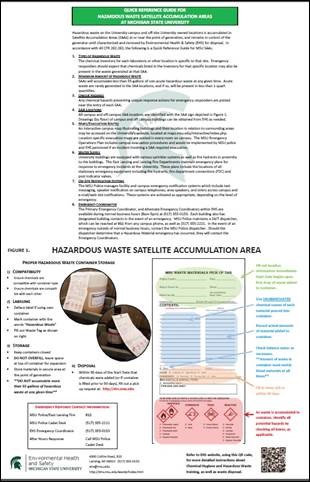
-
"Elements Of Proper Hazardous Waste Storage" (Optional)
Personnel may print additional copies of the Elements of Proper Hazardous Waste Storage to post in close proximity to your hazardous waste storage area.
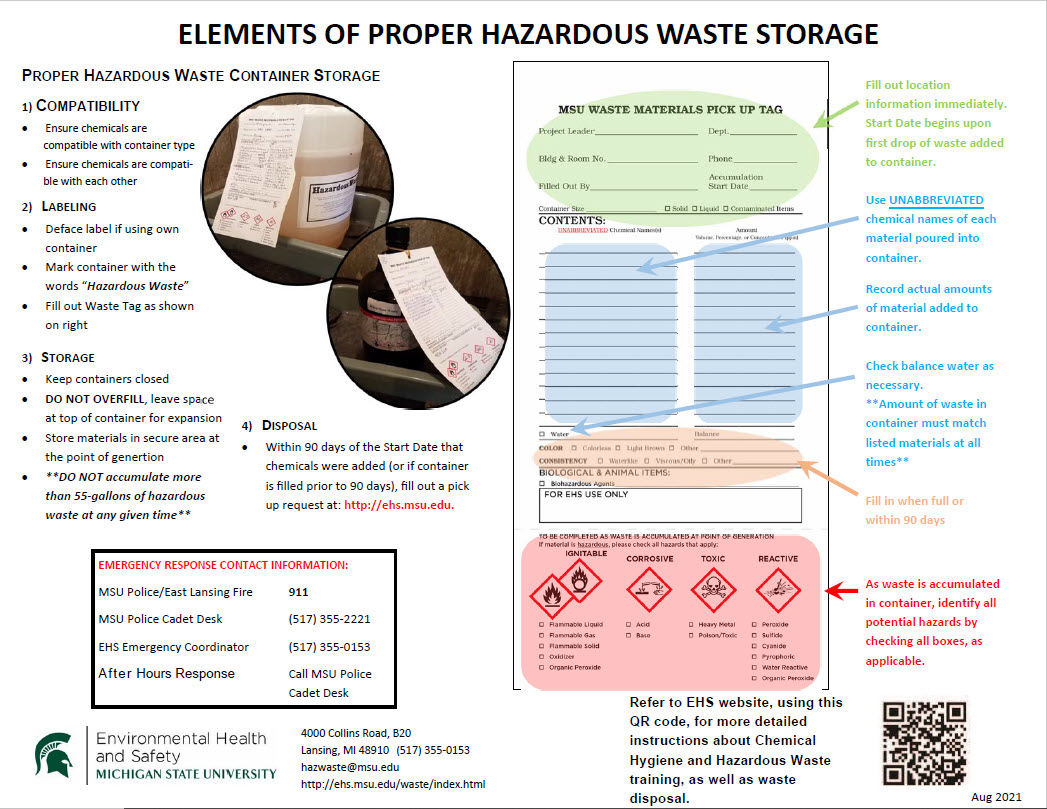
Compatibility
Ensure chemicals are compatible with container type. Ensure chemicals are compatible with each other.
-
Chemical Compatibility Table
Accidental mixing of one hazardous waste with another may result in a vigorous and dangerous chemical reaction. Generation of toxic gases, heat, possible overflow or rupturing of receptacles, fire, and even explosions are possible consequences of such reactions.
The Chemical Compatibility Chart (PDF) shows chemical combinations believed to be dangerously reactive in the case of accidental mixing. The chart provides a broad grouping of chemicals with an extensive variety of possible binary combinations.
Storage
Keep containers closed. Do not overfill containers; leave space at top of container for expansion. Store materials in secure area at the point of generation. DO NOT accumulate more than 55‐gallons of hazardous waste at any given time.
-
Use of Temporary Containers "Day Jars"
Hazardous waste regulations allow for waste to be collected in temporary containers (aka day jars) over the course of each workday prior to being emptied into a designated hazardous waste container. Day jars must be kept closed with a proper fitting lid (i.e., no parafilm, tape, paper, etc.), and must be in good condition (i.e. no visible staining of the outside of the container, legible label). The day jar MUST also be emptied at the end of each day OR at the end of each shift.
See Container Labeling section of this page for labeling requirements and templates.
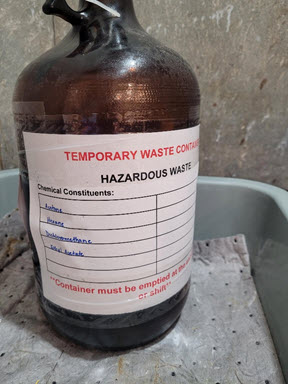
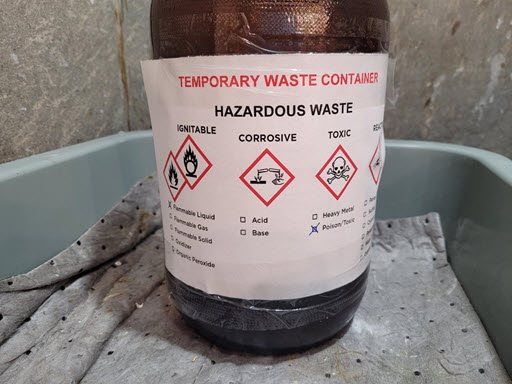
If day jars become unusable, please dispose of them one of the following two ways.
- If the jar is heavily contaminated with chemical constituents, attach a waste tag identifying the chemical constituents, and submit the material for hazardous waste pick up.
- If the jar is not heavily contaminated, make sure no residual chemicals are in the bottle (i.e. dried in fume hood or rinsed), and dispose of the container like other empty reagent bottles.
Improperly used and stored day jars are a violation of federal and state hazardous waste regulations, and if identified during federal or state hazardous waste inspections could result in fines and violations for the University per container, per violation, per day in violation.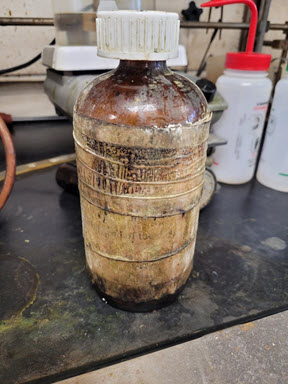
This container label is heavily stained, illegible as to the contents and also does not have a proper fitting lid. This container is in violation of hazardous waste regulations.

This container is heavily stained, label is illegible, and contains unidentified solidified material in bottom. This container is in violation of hazardous waste regulations.
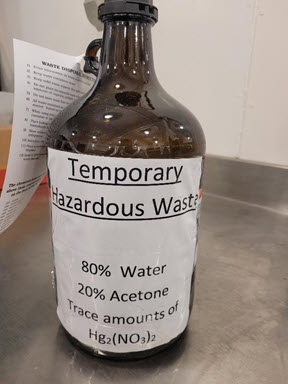
This container does not have a depiction of the hazards and contains chemical abbreviations. This container is in violation of hazardous waste regulations.
Container Labels
All containers must be marked with the words “Hazardous Waste.” Deface label if using your own container.
-
Pick Up Tags
An MSU Waste Materials Pick Up Tag must be attached to each waste storage container.
Complete immediately:
- location and contact information
- start date (date first drop of waste is added to container)
Complete as waste is accumulated:- UNABBREVIATED chemical names of each material poured into container
- Actual amounts of material added to container (amount of waste in container must match listed materials at all times)
- Check balance water as necessary
- Potential hazards (ignitable, corrosive, toxic, reactive) by checking applicable boxes
Complete when container is full (or within 90 days):- Color
- Consistency
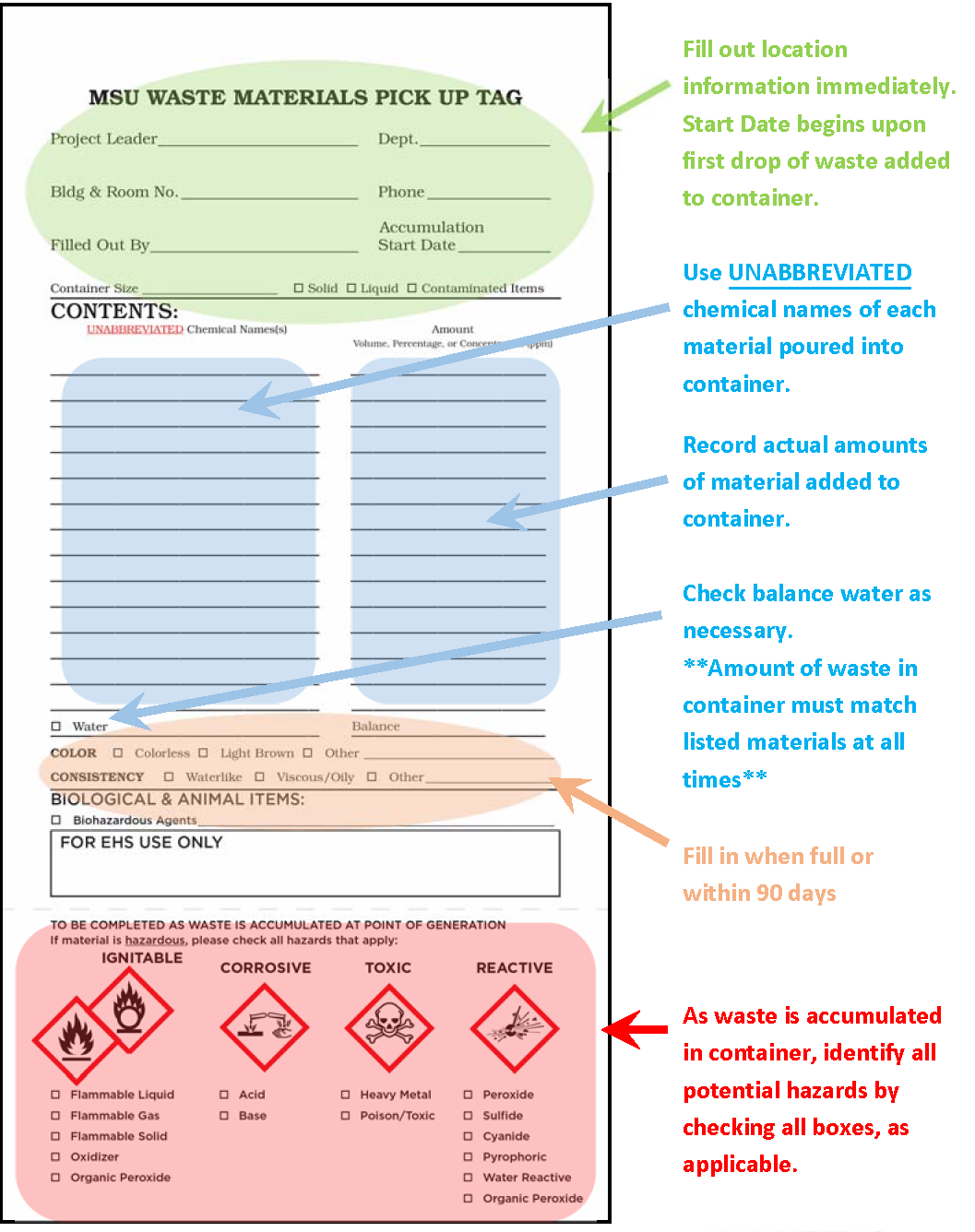
Request waste tags on the EHS Safety Portal (Lab Label Request).
-
"Hazardous Waste" Labels
HAZARDOUS WASTE LABELS
If using a container to store Hazardous Waste, other than the 5-gallon HDPE Carboy provided by MSU EHS, the container must be labeled with the words “Hazardous Waste”. Make sure you have properly defaced the label of the container as shown below, and either write the words “Hazardous Waste” on the container, or utilize the label template below to pre-print labels for your lab.
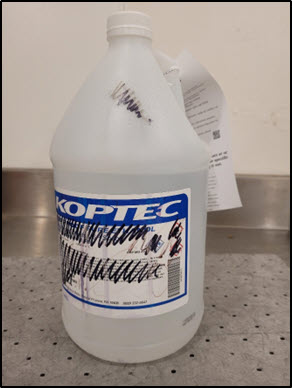
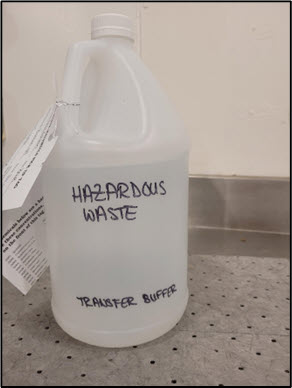
Hazardous Waste labels ready to affix to waste storage containers are available to print to Avery Template 5160.
Template file for Avery 5160 Labels (DOCX)

-
Temporary Containers (“Day Jars”)
Day jars must be labeled with the words "Temporary Waste Container," "Hazardous Waste," the unabbreviated chemical constituents, and the hazards in the container. The original manufacturer label on the bottle must be fully defaced and unreadable. This can be done with a large Sharpie marker, or the label can be removed.
Templates for labeling day jars:
- Option 1 – sized to fit jars 1L in size - Avery Label #94213 (PDF)
- Option 2 – sized to fit jars 4L in size - Avery Label #5126 (PDF)
Alternatively, these labels can also be printed and taped to the Day Jars. Both pieces of the labels must be attached to the Day Jar.
Disposal
Dispose within 90 days of the Start Date that chemicals were added (or if container is filled prior to 90 days). Request pickup through EHS.
Also see: Guidance for Specific Types of Waste

